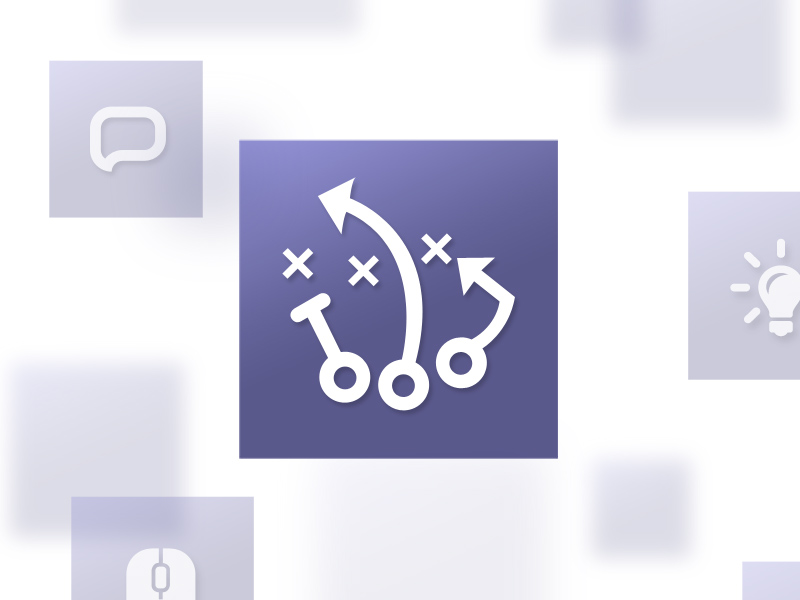The Unexpected Benefits of Strategic Planning
Whether we’re developing a mobile app, a corporate intranet or a product database, a key initial phase of every project we do is Strategic Planning and Analysis. This phase is important to the success of an initiative for reasons outlined below, but it also has some surprising benefits worth noting.
But first we should define our terms.
What exactly is Strategic Planning?
Every client partner has a unique situation, which means no great interactive solution is one size fits all. So our goal in Strategic Planning and Analysis is to gain a full understanding of the business structure and nuances and identify the user audiences, in order to evolve a complete concept that meets stated needs and accounts for future considerations.
This phase usually includes the following activities, depending on the nature of the project:
- Stakeholder Workshops and Concept Planning (in which we interview key stakeholders to understand the marketing objectives of the client, understand the gaps between current and future experiences, and determine functionality requirements)
- Audience/User Research (which we conduct using a combination of techniques online and in the field, to understand how different users think about their interaction with a company across all brand touchpoints, to help prioritize tasks and functions and build a conceptual model, and to define requirements for content and messaging)
- Market Research and Competitive Benchmarking (with a specific focus on best practices and comparison to major goals as they relate to audience expectations; we also follow competitors over time as part of our strategic relationship)
- Success Measurement Planning (in which we talk to our clients about success criteria and make sure that these measurements are developed into the solution from the very beginning, because this is integral to our principle of being accountable to our clients)
- Technology Assessment (which ensures that the appropriate capabilities are brought to bear, and focuses mostly on the technology components that make up the solution; but as a long-term partner, we also work to understand each client’s long-term IT roadmaps)
- High-Level Concepting (which incorporates brand elements, interface components, wireframes or branded comps, to allow project stakeholders to experience the vision and grant executive approval for the project)
The outcome of all of these activities is a Key Findings Summary and a full set of Strategic Recommendations, which gets the specific intranet or product catalog or mobile site underway. This is the expected benefit of Strategic Planning, the main purpose for doing all of the above.
But there are also a number of unexpected benefits that turn out to have a pretty high value to our clients.
The unexpected benefits of Strategic Planning
One of the things that sometimes takes clients by surprise is that the Strategic Planning process often turns out to be one of the rare occasions when stakeholders all get together and share out everything about the business.
Website projects tend to take place only once every few years. New people have come into the organization that weren’t involved the last time. And the desire to give input to a significant new project has a way of overcoming busy schedules and siloed communication structures and all the other everyday things that so easily get in the way. So these conversations become a key opportunity for all of these people to really talk.
And time after time, stakeholders are surprised at what they discover about the business as a result of the planning process. Things come up that have nothing to do with “just redoing the website” (or app, or whatever the project is) but reveal important attitudes or technological challenges or new product development opportunities, etc. People walk away with a more nuanced understanding of the work they and their colleagues do every day.
Which leads to yet another surprising benefit of the process: the squeaky wheel doesn’t get all of the grease.
Thanks to the methodology of Strategic Planning and Analysis, the collective input of the whole company is considered and weighed and presented back to all. The way these inputs are weighed against one another can be pretty complex, but in many cases the three major factors are:
- business complexity/governance (are you able to make and maintain what you want)
- technical complexity (how hard or expensive the ideas are to execute and how well they integrate with other systems)
- business value (what customers want)
And because it’s a third party doing the collecting and weighing, everyone’s inputs are removed from internal politics, personal preferences and outdated expectations, presenting a clear-eyed path for moving into the future.
So though it may start with a desire to define a particular project, the Strategic Planning process often turns out to be a lot more valuable—across the business—than anyone expected.





